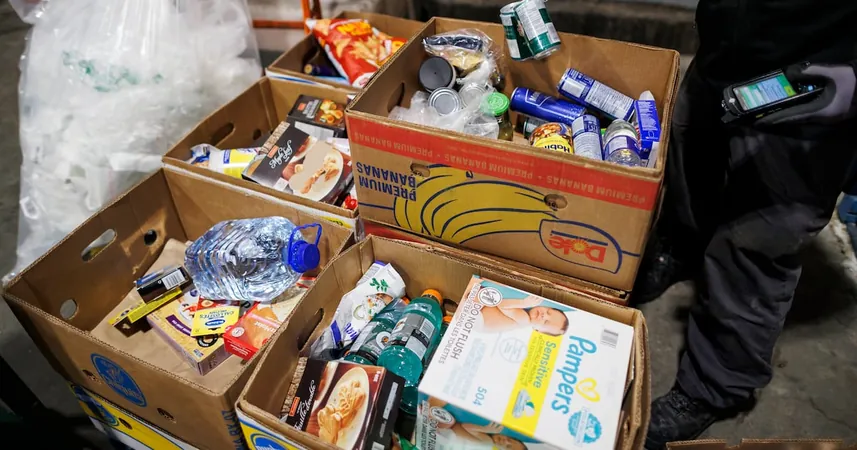
Alarming Surge of Accidental Drug and Alcohol Deaths in Ontario: A Call for Urgent Action!
2025-01-13
Author: Emily
A troubling new report from the Ontario Drug Policy Research Network and Public Health Ontario highlights a stark increase in accidental drug and alcohol toxicity-related deaths across the province, revealing a public health crisis that must not be ignored. Between January 2018 and December 2022, the average number of daily substance-related deaths in Ontario skyrocketed from 4.5 to eight per day.
In total, there were a shocking 12,115 accidental deaths related to substance toxicity over these five years, with annual fatalities escalating by an eye-opening 68%. Specifically, deaths in 2018 numbered 1,660, rising to 2,796 in 2022.
The report details a significant uptick in deaths involving a single substance, which rose by 75%, while those involving multiple substances soared even higher: fatalities with two substances jumped by 167%, and three or more substances by an alarming 186%. By 2022, a staggering 11% of all substance-related deaths were linked to three or more substances, underscoring a grim shift towards more complex situations of drug misuse.
One of the most concerning findings is the prevalent combination of opioids and stimulants in these cases, which increased from 30% in 2018 to an alarming 42% of all substance-related toxicity deaths by 2022. Dr. Tara Gomes, a key researcher at St. Michael's Hospital and a principal investigator of the ODPRN, emphasized the bleak reality: “The volatility of the illicit drug supply, compounded by increased exposure to multiple substances, has inflicted unprecedented harm throughout the province.”
The escalating deaths involving stimulants, benzodiazepines, and alcohol signal an urgent need for a comprehensive approach to the drug toxicity crisis that goes beyond opioids and acknowledges the intricate nature of substance use and its associated harms.
Missed Opportunities Within the Healthcare System
The report also sheds light on a tragic pattern — the high prevalence of concurrent mental health issues and recent Hepatitis C diagnoses among those who succumbed to substance-related toxicities. This underscores the potential for integrated healthcare models that could provide crucial support for individuals facing substance use disorders alongside other health challenges.
Worryingly, nearly one-third of those who died had encountered the healthcare system in the week leading to their deaths, with many leaving before receiving necessary medical advice. This reflects significant barriers and missed opportunities for timely intervention in a vulnerable population.
Dr. Gomes pointed to the deficiencies within the healthcare framework: “Our hospital and emergency departments are not adequately equipped or resourced to meet the needs of drug users, leading to stigma and subpar care. Too often, those in need of support leave before they receive it.”
This concerning trend indicates that significant changes are needed to ensure that individuals struggling with substance use disorders can access the quality care they urgently require. With over one-quarter of hospitalized patients and one in seven emergency department visitors leaving against medical advice in the week leading to their deaths, it’s imperative that Ontario strengthens its healthcare response to this escalating crisis.
As the death toll continues to rise, can we afford to sit back any longer? It’s time for Ontario to take action and address this growing epidemic before it’s too late!









 Brasil (PT)
Brasil (PT)
 Canada (EN)
Canada (EN)
 Chile (ES)
Chile (ES)
 Česko (CS)
Česko (CS)
 대한민국 (KO)
대한민국 (KO)
 España (ES)
España (ES)
 France (FR)
France (FR)
 Hong Kong (EN)
Hong Kong (EN)
 Italia (IT)
Italia (IT)
 日本 (JA)
日本 (JA)
 Magyarország (HU)
Magyarország (HU)
 Norge (NO)
Norge (NO)
 Polska (PL)
Polska (PL)
 Schweiz (DE)
Schweiz (DE)
 Singapore (EN)
Singapore (EN)
 Sverige (SV)
Sverige (SV)
 Suomi (FI)
Suomi (FI)
 Türkiye (TR)
Türkiye (TR)
 الإمارات العربية المتحدة (AR)
الإمارات العربية المتحدة (AR)